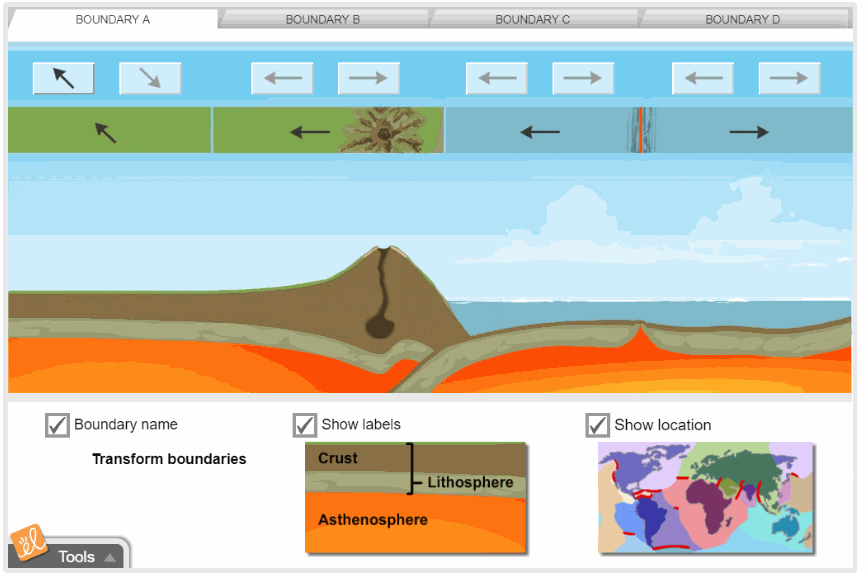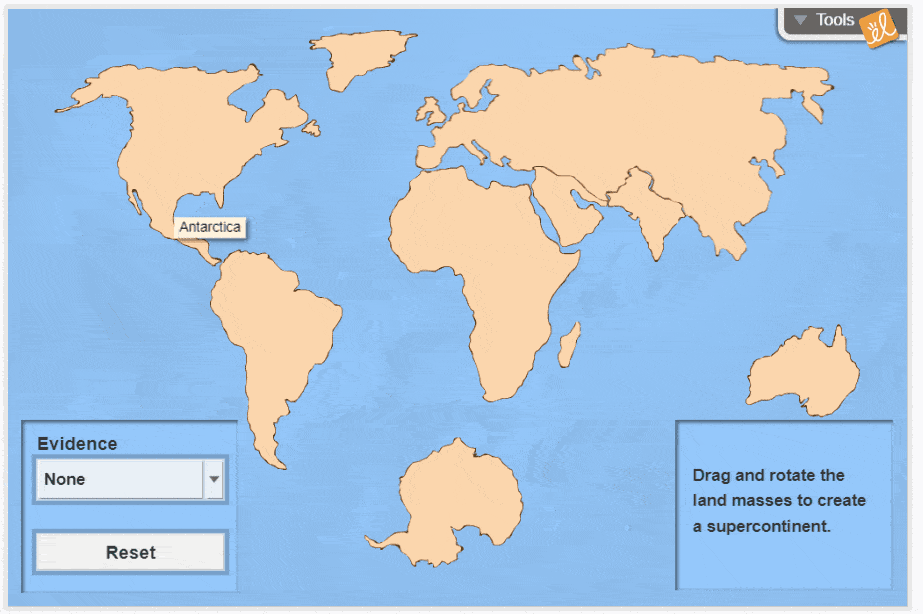
Geological formations, such as mountains, volcanoes, earthquakes, and the San Andreas Fault, grab students' attention. They’re curious about the features of Earth. How did mountain ranges pop out of the ground? What caused the shapes of the continents? Plate tectonic activities can answer these questions and more.
What are plate tectonics?
Plate tectonics is a scientific theory that explains how Earth's subterranean movements caused the creation of significant landforms. Basically, Earth’s crust is broken into enormous plates that move. The theory of plate tectonics describes how the plates shift, interact, and change the physical landscape.
Key concepts of plate tectonics
Tectonic plates are huge pieces of the Earth's crust and the uppermost mantle, consisting of oceanic and continental crust. There are seven major tectonic plates and about ten minor ones. The major plates are African, Antarctic, Eurasian, Indo-Australian, North American, Pacific and South American. They are named based on what lies above them.
There are also plate boundaries, which are where enormous sections of Earth's crust roughly meet. At plate boundaries, plates collide, move apart, shift under or over, or slide past one another.
What are the three types of plate boundaries? The tectonic boundaries are divergent boundaries (plates move apart), convergent boundaries (plates move into each other), and transform boundaries (plates move sideways). As these plates collide, move, and slide, different geological features form.
Why teach plate tectonics to students?
Students need to learn about plates because it provides a basis for understanding the features of the Earth. Plate tectonic activities help students connect the past with current happenings on Earth. They can analyze fossils and rock layers to track the history of plate movements and make predictions for future geographical features on Earth. These lessons build critical thinking skills and foster curiosity for the world around them.
Ready to elevate your science lessons?
Gizmos Investigations are now available! These interactive, scaffolded science lessons combine Gizmo simulations with built-in student questioning and just-in-time feedback to support sensemaking practices. Designed to meet next-generation science standards, they help all students actively engage in the doing of science. Explore how Gizmos Investigations can transform your classroom today!
Easy activities to effectively teach plate tectonics
Plate tectonics is a vast concept that encompasses so much. How do you teach students about tectonic plates in relevant and interesting ways? Incorporate real world examples and allow for student exploration of plate tectonics.
- Write myths and fables about why plate tectonics moved and changed the Earth’s landscape.
- Make a puzzle by cutting paper shapes of the different tectonic plates to illustrate where they are in the world and how they could interact.
- Investigate features of the Earth through virtual field trips, such as Jeju Volcanic Island and Lava Tubes.
- Use graham crackers and frosting for students to simulate the movement of tectonic boundaries.
- Ask students to be scientists and find answers to questions for posters or presentations. Sample questions include: What are plate tectonics? How are tectonic plates formed? And what are some examples of tectonic activity?
- Enhance instruction with the Plate Tectonics Gizmo. Through this virtual lab, students move the Earth's crust at various locations to observe the effects of the motion of the tectonic plates.

- Discuss the work of Alfred Wegener, who was credited with the modern theory of plate tectonics and Pangaea. (There’s a Gizmo for this, too! Check out Building Pangaea.)

Inspire geological curiosity in the classroom today
The Earth is fascinating, with a rich history, dynamic processes, and wondrous features. Encourage students to investigate everything from mountains and volcanoes to plant and animal fossils. Use interactive science resources, such as virtual labs, and authentic examples, like rock samples, for students to explore. Let them ask questions and build models. Keep the conversation going throughout the school year without the limits of a particular unit. The Earth is our home. Help your students learn to be good stewards of it.
Are you ready to teach plate tectonics? The Plate Tectonics Gizmo has everything you need.

What about bringing more virtual labs to your students? Take a free trial and let Gizmos transform your lessons.
Start My Free Trial